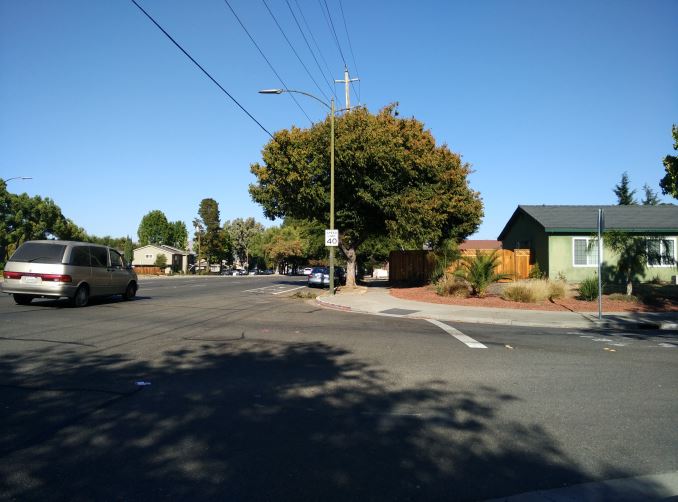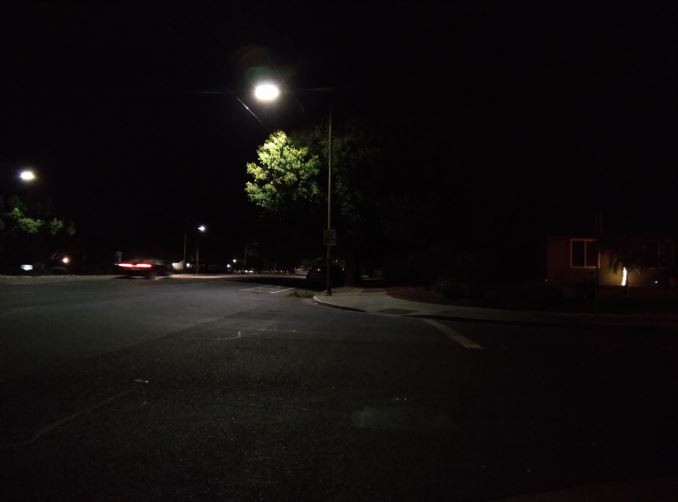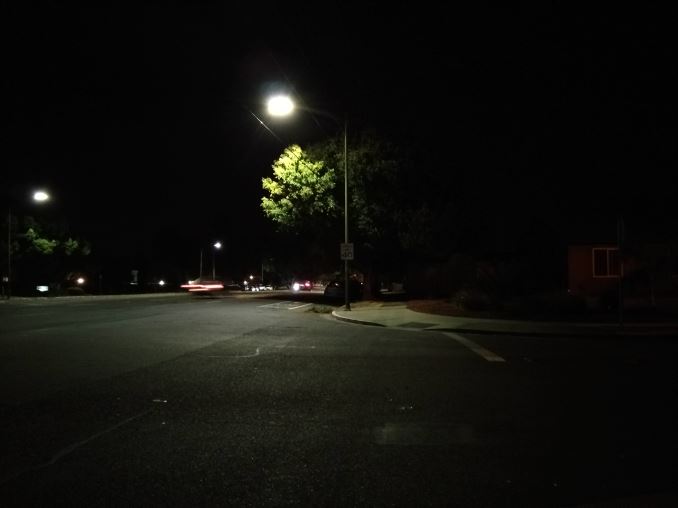The Xiaomi Mi Note Pro and Mi Note Review
by Joshua Ho on September 11, 2015 9:00 AM ESTStill Image Performance
Now that we’ve discussed some of the basic aspects of the camera system in the Xiaomi Mi Note line, we can begin to look at how this all translates to real-world camera performance. In order to do this, we run our standard suite of camera tests which should give a good feel for what camera performance is like when variables such as hand shake and inconsistent camera positioning are removed from the equation.
Xiaomi Mi Note
Xiaomi Mi Note Pro
Our first test is the ISO chart test, which is designed to provide an absolute test of peak spatial detail. This is a controlled lighting test, which should help to reduce potential confounding factors. In the case of the Xiaomi Mi Note line, we can actually see the difference in detail compared to the Galaxy S6 as the Mi Note appears to retain much more detail along the edges of the photo relative to the Galaxy S6 and other smartphones with larger sensors and wider apertures. Detail at the center of the photo is also strongly retained but it seems Xiaomi might be sharpening a bit aggressively as the circle in the center is rather jagged instead of smooth and round. Both horizontal and vertical detail is well retained though, all the way up to the 20 line mark. We can also see some evidence of haloing around the high contrast detail, which is rather distracting and is indicative of strong sharpening effects.
Mi Note
Mi Note Pro
In this basic daytime landscape shot we can see a few potential problems already with the Mi Note camera processing. Although the details are mostly correct, looking at the trees in the distance it's quite obvious that noise suppression is strongly suppressing fine details in order to try and make sure images don't have any noise. The tree in the center of the frame has this strange effect where details inside of the leaves are mostly smudged away but the edges have very high contrast, which creates an odd effect and suggests artificial sharpening. The Mi Note also clearly has far too aggressive noise reduction here as it basically looks like the Mi Note Pro photo but with an AA filter applied. However, for the most part that's all that I have to criticize here. Given that a number of flagship smartphones have shipped with shockingly poor post-processing even in daytime scenes, I'm impressed by how the Mi Note and Mi Note Pro give at least respectable results here.
Mi Note
Mi Note Pro
In low light we really start to see the weaknesses of the Mi Note Pro and Mi Note. Despite the use of OIS, both devices are underexposing significantly and there's just far too much luminance noise reduction going on here. However, once again, that's all the real criticism I have for these phones. Obviously, something like the Galaxy S6 shows far more detail and better exposure in this scene, but there are significant purple hues present in areas that should be black instead of purple, and when looking closely at the Galaxy S6 photo the severe sharpening effects really make it a bit unnatural and gritty. The iPhone 6 Plus is the winner here by virtue of larger pixel size and a lot of software magic to hide the 1/4 second exposure so moving cars appear to be relatively sharp instead of a complete blur, but Xiaomi could easily be in the race for best smartphone camera within a single product cycle of work.
Overall, the Xiaomi Mi Note camera isn't amazing, but it's far from terrible. In daytime situations photo quality is actually already very good, but with some minor post-processing issues that could be resolved with a single OTA update. At night time, with some processing improvements and perhaps higher sensor gain the Mi Note line could start to be compared to the iPhone as well. This doesn't sound all that impressive, but it really is because this is the first phone in this price point where I can even begin to compare the camera to flagship smartphones.


































94 Comments
View All Comments
DigitalFreak - Friday, September 11, 2015 - link
You guys need to say if a phone is a US model up front. I'd rather not waste my time reading a review of something that's only available in Asia/Europe.Daniel Egger - Friday, September 11, 2015 - link
I agree but for the exact opposite reason. But on the bright side the non-availability of subsidised US versions means that we we non-US readers don't have to have to look up the unsubsidised prices elsewhere to actually get a feel for the real price...Jimbo - Friday, September 11, 2015 - link
Yet your eventual cost for the very same hardware is always more, so how is that a "bright side" again?Daniel Egger - Friday, September 11, 2015 - link
I've no idea what you're trying to say. I applaud every attempt at providing comparable data: When AT reviews a laptop they'll tell you the MSRP (and street price), when they look at a phone they'll typically tell you some bullshit subsidised price which has only a meaning in the US and nowhere else in the world (and also only if you're actually looking to buying the device on contract).mkozakewich - Saturday, September 12, 2015 - link
I really wish they'd stop doing that. Because of stuff like that, I'm sure most people don't realize their phones are worth more than a few hundred dollars.duploxxx - Friday, September 11, 2015 - link
order this phone through web so available everywhere. reading something on technology is wasting time? time for you to stay in the apple store......DigitalFreak - Friday, September 11, 2015 - link
I'm the furthest thing from an Apple fan you'll find, moron. I'm not interested in buying a phone that most likely won't work on many of the US bands.You, on the other hand, should spend less time reading about technology and focus on learning the basics of the English language.
jordanclock - Friday, September 11, 2015 - link
Instead of being ass, you could just look up the available bands on a site like gsmarena. Not every product reviewed on Anandtech is going to be applicable to you. In this case, the phone does not support LTE on any US carriers but should support HSPA+ on ATT and T-Mobile.DigitalFreak - Friday, September 11, 2015 - link
As a service to their readers, all AT needs to do is add one sentence. As for the rest, when someone attacks me they get it right back.Have a wonderful day.
Vorl - Friday, September 11, 2015 - link
I agree. They very rarely review anything that isn't for consumption in the US. I would also rather not waste my time reading about something that isn't available. Yes, it's a waste. There isn't anything here that's ground breaking tech wise, so nothing to "learn". It's just a matter of how they put the package together. if isn't nothing I can use, why would I care?